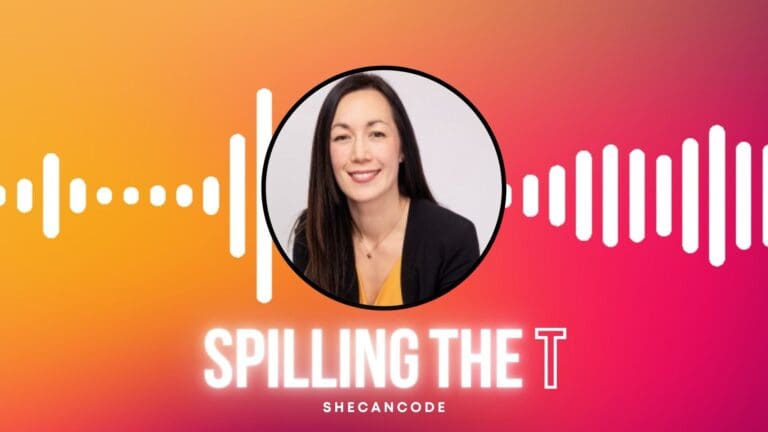WHAT IS AGILE?
Agile ways of working were born out of software development over 20 years ago. At the heart of it, working in an agile fashion means taking an iterative approach to delivering value. By delivering value more frequently you get regular feedback to know whether you are working on the right thing or not. So, in theory, it reduces risk and results in a more suitable end product/service for the customer.
WHAT IS SCRUM?
Scrum is the most popular framework that agile teams follow. Agile itself is a mindset and collection of values and principles, whereas Scrum offers a guideline or boundary to work within to achieve results from the agile approach.
In Scrum, there are five core values: commitment, courage, focus, openness, and respect.
There are also three ‘pillars’ of scrum: transparency, inspection, and adaptation.
All of these sound pretty applicable to any high-performing team, right? Regardless of if they’re working in software or not.
USING SCRUM IN A NON-IT ENVIRONMENT (MARKETING)
I don’t work in a software team. I work in marketing & operations. However, my company, Value Glide, works in tech, so we practice what we preach internally. And my team has found following the scrum framework to be extremely effective and enjoyable. I want to share some insights and top tips and hopefully give you the confidence to try adopting scrum where you work too!
OUR APPROACH
When using scrum you work in ‘sprints’. A sprint is a pre-determined amount of time where you are working toward specific goals and only on chosen tasks. Working in sprints keeps you focused. We do 1-week sprints.
We try to break down bigger goals and tasks into smaller, more deliverable increments. This means we deliver value faster & get quicker feedback.
SETTING A SPRINT GOAL
At the beginning of the week, we collaborate over zoom to set our sprint goal (what we want to achieve for the week). We also reflect on our backlog (our list of tasks) and decide which backlog items (tasks) to pull into the sprint.
DAILY STAND UP
Every morning, our team has a daily stand-up. In this video call, each team member discusses the previous day’s progress and what they’re focusing on for the day ahead. Simply outlining every task you’re working on is not valuable – so we try to only include information that is useful for the whole team to be aware of.
SPRINT REVIEW
At the end of the week, we have a Sprint Review / Retrospective video call. This is an opportunity for us to reflect on whether we achieved our sprint goal. We celebrate successes and share learnings.
BACKLOG & PRIORITISATION
We also reflect on our backlog weekly. Think of a backlog as a pipeline of future work tasks. Our backlog is on a visual management tool (we use Trello). We have columns for “To Do”, “Doing”, “Done”, “Blocked” etc. We have tasks within each column (1 Trello card to 1 task). We move tasks across columns. This workflow board is great for visibility and transparency. We also regularly refine our backlog. Is everything we have scheduled for future work still relevant? If not, we can archive it.

SCRUM HAS BEEN GREAT FOR US BECAUSE IT HAS:
Increased Transparency and Collaboration
In marketing, it’s common to have multiple people working on different projects, with different goals and priorities. Scrum provides a structure for everyone to see each other’s progress and collaborate effectively. Daily stand-up meetings, for example, allow team members to share their current status, challenges, and successes, fostering transparency and team unity.
Promoted Flexibility and Adaptability
Marketing is a dynamic field where plans can change quickly in response to new information or market conditions. The Scrum framework promotes flexibility and adaptability by allowing teams to adjust their priorities and plans in response to changes. This can be especially useful for marketing teams that need to pivot quickly in response to market conditions or changes in their target audience.
Improved Time Management and Prioritisation
Marketing teams often have multiple projects with tight deadlines and limited resources. The Scrum framework helps teams prioritise and manage their time effectively by defining a clear sprint goal, breaking down work into smaller tasks, and using sprint retrospectives to evaluate their performance and make improvements. This leads to more efficient and effective use of time and resources, helping teams deliver better results.
Enhanced Customer Focus
In marketing, it’s crucial to understand and respond to the needs of your target audience. Scrum emphasizes a customer-focused approach by prioritising customer feedback and involving customers in the development process. This helps marketing teams better understand the needs and preferences of their target audience and create more effective marketing campaigns.
Promoted Continuous Improvement
Scrum encourages continuous improvement by using sprint retrospectives to evaluate performance, identify areas for improvement, and make adjustments. This helps marketing teams continuously improve their processes and results, leading to better results over time.
SUMMARY
I hope you’ve learned how agile ways of working, and the Scrum framework, can apply to almost any team. It’s certainly helped our marketing team be more efficient, creative and fun! So, whether you’re working in a large organisation or a small startup, consider adopting scrum to approach work differently. And remember, you can start small. Why not begin with just the daily stand up for example? Thanks for reading and I hope you’ve acquired some practical insights!

Vishakha Singh
Based in India, I work in a small consultancy in the tech industry, 100% remote. I’m passionate about marketing, technology, and uncovering better ways of doing things!








